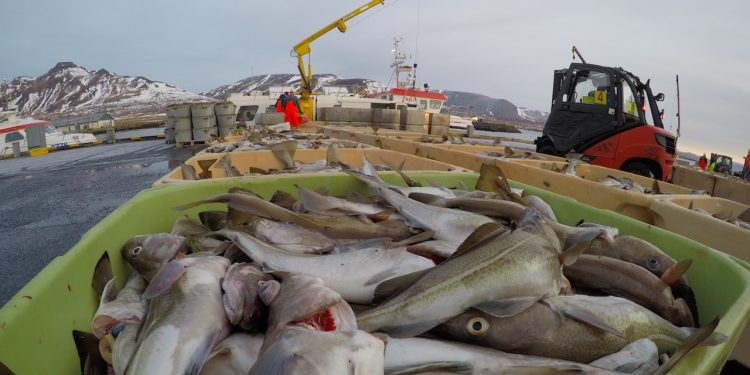Iceland’s Marine Research Institute has announced its advice for the 2021-22 quota year, of which the key item is the recommendation that the cod quota should be reduced from the 257,000 tonnes this year to 222,737 tonnes for the quota year starting 1st September this year.
This is a 13% cut compared to the current year, which also saw a 6% reduction compared to the previous quota year.
Icelandic fishing vessel operators’ federation SFS has backed the Marine Research Institute’s recommendations to the Minister who bears responsibility for setting the next year’s quotas, and who is not bound to follow the Institute’s advice to the letter.
‘There has been a great deal of progress made in the last twelve years in strengthening the cod stock,’ stated SFS director Heiðrún Lind Marteinsdóttir.

‘Fishing has been carried out in a sustainable manner and catches restricted on a precautionary basis and in accordance with scientific advice. Although it has been possible to build up a strong stock, there are poor year classes that inevitably result in fluctuations. The Marine Research Institute also considers that the stock has been over-estimated for some years, and a response to this has to be made.’
Heiðrún Lind Marteinsdóttir commented that SFS has long been concerned about the status of marine research in Iceland, amplified by changing environmental conditions alongside the increasingly demanding requirements of the market.
‘The advice that has been published indicated that these concerns are justified and it is urgent that action is taken,’ she said.
‘Companies will have to cope with revenue reductions with no notice, and are faced with tough decisions. It is clear that postponing vital decisions towards ensuring sustainability would be short-term and damaging. This would push the problem into the future, taking the risk of it becoming increasingly serious.’
Haddock and Greenland halibut up
According to the Marine Research Institute, the cod stock is at its strongest for 40 year and fishing effort is at a historic low, while the cod reference biomass can be expected to remain stable until 2023 and 2024 when the above average 2019 and 2020 cohorts enter the reference biomass.
Advice is also for an 11% increase in the haddock quota to 50,429 tonnes, alongside a 77,561 tonne saithe quota, a figure which is virtually unchanged. An increase of 13% is advised for the Greenland halibut quota to 26,650 tonnes, while the Institute recommends a 17% reduction for golden redfish in the East Greenland/Iceland/Faroe Islands area to 31,855 tonnes.
There’s a positive recommendation for the Icelandic summer-spawning herring, which has seen its stock increase following a period of steady decline since 2008, related to poor recruitment and the persistent infection by a protozoan parasite.
The 2017 cohort is estimated to be strong and will enter the reference biomass this year. The advice for the 2021/2022 fishing year is 72,239 tonnes, a 104% increase over the previous fishing year’s TAC.









